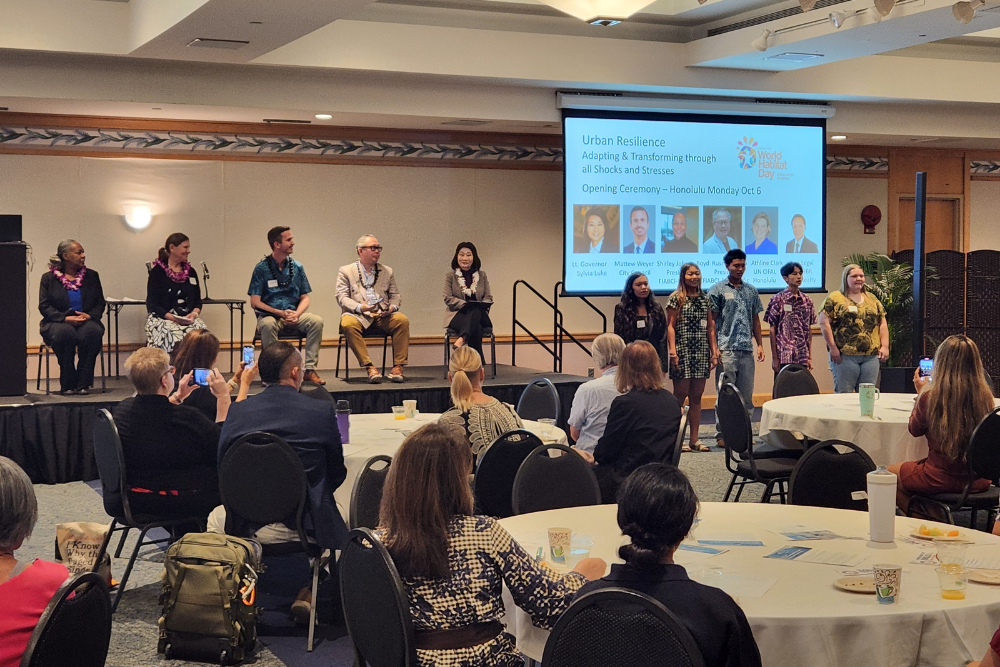

Sustainable Real Estate: Building a Greener Future for Saudi Arabia
Sustainability is no longer merely a buzzword; it is a guiding principle for architects, developers, and urban planners as they strive to create environmentally conscious spaces that resonate with the local community. With an ever-increasing focus on environmental responsibility and the urgent need to combat climate change, the adoption of sustainable principles has become a necessity rather than an option.
Saudi Arabia, as a nation embracing Vision 2030, is making significant strides in promoting sustainable development across all sectors, including real estate. From green building initiatives to energy-efficient designs, the real estate sector in Saudi Arabia is redefining its role in shaping a greener future.
Sustainable Practices in Real Estate
Sustainable practices in the real estate sector have evolved from being a niche concept to becoming a driving force behind modern development. This shift is a response to the growing awareness of environmental concerns, the need for resource conservation, and a desire for communities that prioritize well-being.
Green building certifications, such as LEED (Leadership in Energy and Environmental Design) and BREEAM (Building Research Establishment Environmental Assessment Method), set the gold standard for sustainable construction. These certifications evaluate various aspects of a building, including energy performance, water efficiency, materials selection, indoor air quality, and innovation. Developers and architects adhering to these standards signal their commitment to creating environmentally responsible structures.
2. Energy Efficiency and Renewable Integration
Sustainable real estate prioritizes energy efficiency through innovative technologies and design strategies. Buildings are equipped with state-of-the-art insulation, efficient lighting systems, and optimized HVAC (Heating, Ventilation, and Air Conditioning) systems. Incorporating renewable energy sources, such as solar panels and wind turbines, further reduces carbon footprints and reliance on non-renewable resources.
3. Smart Technologies for Smart Spaces
The rise of the Internet of Things (IoT) has transformed the way buildings are managed and operated. Smart technologies facilitate real-time monitoring and control of various systems, including lighting, heating, cooling, and security. These technologies enhance energy efficiency by adjusting resource consumption based on real-time occupancy data.
4. Sustainable Materials and Construction Techniques
Sustainable real estate emphasizes the use of eco-friendly construction materials and techniques. Recycled and locally sourced materials, low-VOC (Volatile Organic Compounds) paints, and sustainable wood are employed to reduce environmental impact. Additionally, advanced construction methods that minimize waste and energy consumption are integral to sustainable development.
5. Embracing Green Spaces and Biodiversity
Sustainable real estate integrates green spaces and landscaping into its design. Rooftop gardens, communal parks, and vertical vegetation provide aesthetic value, improve air quality, and enhance biodiversity. These green spaces also serve as communal areas, fostering a sense of community and well-being among residents.
6. Water Efficiency and Conservation Strategies
Water-efficient plumbing fixtures, rainwater harvesting systems, and intelligent irrigation methods are hallmarks of sustainable real estate projects. These strategies mitigate water scarcity and promote responsible water use. Implementing water-efficient solutions contributes to reducing the strain on local water resources.
7. Community-Centric Design and Well-being
Sustainable real estate places a strong emphasis on human well-being and community engagement. Walkable neighborhoods, mixed-use developments, and pedestrian-friendly layouts encourage active living and social interaction. Inclusive design ensures that buildings are accessible to people of all abilities and ages.
8. Life Cycle Assessment and Adaptive Design
Sustainability in real estate takes a long-term view through lifecycle assessments. These assessments evaluate a building's environmental impact from design and construction to operation and eventual decommissioning. The insights gained inform adaptive design strategies that ensure buildings remain relevant and efficient throughout their life cycles
The Importance of Sustainable Practices in Real Estate
One of the primary drivers of sustainable development in the real estate sector is the understanding that buildings and cities play a crucial role in reducing greenhouse gas emissions and conserving natural resources, but sustainable practices in real estate go beyond the mere integration of energy-efficient technologies. They encompass a comprehensive approach that takes into account social, economic, and environmental factors.
Job Creation and Economic Growth: Sustainable real estate initiatives generate employment opportunities across various sectors. This surge in employment contributes to economic growth and enhances job market diversification, aligning with Saudi Arabia's broader Vision 2030 goals.
Enhancing Property Value and Market Appeal: Sustainable properties often enjoy higher market demand and property values due to reduced operational costs and enhanced quality of life for occupants. As the market increasingly recognizes the economic benefits of sustainable properties, real estate developers are motivated to invest in green building practices, fostering a more resilient and competitive industry.
Innovation and Industry Leadership: As Saudi Arabia implements cutting-edge technologies and designs, it solidifies its position as a global leader in sustainable development. This not only attracts international investment but also nurtures a culture of innovation that can drive advancements across multiple sectors of the economy.
● Social Well-being and Sustainable Urban Living:
Community Health and Well-being: The integration of green spaces, clean air circulation systems, and access to natural light enhances living conditions, reducing stress and improving mental and physical health.
Inclusive Infrastructure and Accessibility: Sustainable urban planning prioritizes accessibility and inclusivity. Walkable neighborhoods, public transportation systems, and the incorporation of smart technologies improve mobility for all residents, including those with disabilities. By creating equitable living environments, Saudi Arabia is building communities where everyone can participate fully.
Cultural Preservation and Identity: Sustainable development values cultural heritage and local identity. Integrating traditional design elements and architectural practices into modern buildings ensures a sense of cultural continuity. This approach resonates with residents and preserves Saudi Arabia's rich heritage while embracing the future.
● Environmental Stewardship and Climate Action:
Carbon Emission Reduction: Green building initiatives, renewable energy integration, and energy-efficient technologies significantly reduce carbon emissions associated with the operation of buildings. These efforts contribute to Saudi Arabia's climate commitments and align with international efforts to limit global warming.
Water Conservation and Resource Management: Sustainable real estate practices prioritize water-efficient technologies and landscaping. By implementing water-saving solutions, Saudi Arabia ensures responsible water use while mitigating the impacts of water scarcity.
Biodiversity and Ecosystem Preservation: Sustainable urban development incorporates green spaces and vegetation, supporting local biodiversity and ecosystems. This integration of nature into urban areas enhances air quality, provides habitat for wildlife, and contributes to the overall health of the environment.
Driving Innovation and Collaboration
The pursuit of sustainability in the real estate sector is driving innovation and fostering collaboration among various stakeholders. Architects, engineers, and developers are continuously seeking creative solutions to design energy-efficient buildings that blend seamlessly with their surroundings. Additionally, the public and private sectors are collaborating on sustainable projects, leveraging their expertise and resources to accelerate sustainable development. As a result, Saudi Arabia's real estate landscape is witnessing a paradigm shift, where green buildings and sustainable communities are becoming the norm rather than the exception. From commercial developments to residential complexes, sustainability is at the forefront of design and planning.
Sustainable Initiatives Shaping Saudi Arabia's Real Estate Landscape
The green transformation in Saudi Arabia's real estate sector is evident through a multitude of initiatives that prioritize environmental consciousness and sustainable living. These initiatives encompass both large-scale developments and localized projects, all of which contribute to the nation's commitment to a greener future.
King Salman Park: Set to become one of the world's largest urban parks, the King Salman Park is a significant step towards enhancing urban green spaces in Riyadh. The park's design incorporates sustainable elements such as native plant species, energy-efficient lighting, and water-saving technologies, promoting ecological balance within the city.
Green Riyadh: The Green Riyadh project focuses on transforming the capital city into a greener, more livable urban center. The initiative aims to enhance the quality of life for residents by creating parks, green corridors, and recreational spaces. By prioritizing greenery and sustainable urban planning, Green Riyadh is contributing to a healthier and more vibrant city.
Conclusion
Sustainable real estate practices are at the core of Saudi Arabia's commitment to a greener, more resilient future. The integration of green building initiatives, renewable energy sources, and inclusive urban planning exemplifies the nation's dedication to global sustainability goals. As the real estate sector takes giant strides towards sustainability, it also creates opportunities for economic growth, innovation, and a higher quality of life for its citizens.
By embracing sustainable practices in real estate, Saudi Arabia is setting a powerful example for other nations to follow. As the world grapples with environmental challenges, the Kingdom's commitment to building a greener future serves as a testament to its dedication to shaping a better tomorrow for generations to come.
Join us at the 42nd FIABCI Global Leadership Summit, where we will delve deeper into the importance of sustainable practices. Secure your spot and be a catalyst for a greener future.



















































































































































































































































































































































![[Webinar Summary] COVID-19: What lies ahead for the Real Estate Industry?](/uploads/news/9i1w05plq2ksbcswuyj5ze2nr.png)































































































